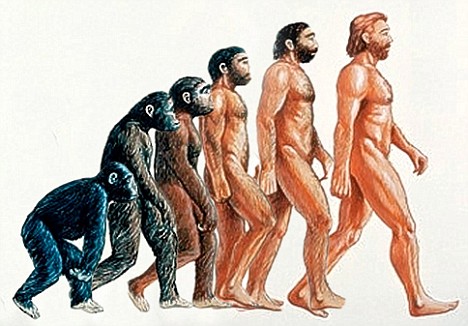 The Cope’s Rule is a slightly less well known rule developed by paleontologists an ecologists to explain how an organism’s size evolves over time. Compared to say the Bergmann’s Rule or Allen’s Rule, it may be the weakest rule to really use.
The Cope’s Rule is a slightly less well known rule developed by paleontologists an ecologists to explain how an organism’s size evolves over time. Compared to say the Bergmann’s Rule or Allen’s Rule, it may be the weakest rule to really use.
I learned about Cope’s Rule when taking a class on biology annd ecology back in college when explaining about evolution along with Bergmann’s Rule and Allen’s Rule and I felt that it is very important for any serious researcher into the process of human growth to know about this rule
I don’t remember the rule completely well so I will take the follow excerpt from the Wikipedia Article on Cope’s Rule which you can find by clicking HERE.
Cope’s rule
– Postulated by the American paleontologist Edward Drinker Cope, states that population lineages tend to increase in body size over evolutionary time. While the rule has been demonstrated in many instances, it does not hold true at all taxonomic levels, or in all clades. Larger body size is associated with increased fitness for a number of reasons, although there are also some disadvantages both on an individual and on a clade level: clades comprising larger individuals are more prone to extinction, which may act to limit the maximum size of organisms.
Effects of growth
Directional selection appears to act on organisms’ size, whereas it exhibits a far smaller effect on other morphological traits, though it is possible that this perception may be a result of sample bias.This selectional pressure can be explained by a number of advantages, both in terms of mating success and survival rate.
For example, larger organisms find it easier to avoid or fight off predators and capture prey, to reproduce, to kill competitors, to survive temporary lean times, and to resist rapid climatic changes. They may also potentially benefit from better thermal efficiency, increased intelligence, and a longer lifespan.
Validity
Discussing the case of canid evolution in North America, Blaire Van Valkenburgh of UCLA and coworkers state:
Cope’s rule, or the evolutionary trend toward larger body size, is common among mammals. Large size enhances the ability to avoid predators and capture prey, enhances reproductive success, and improves thermal efficiency. Moreover, in large carnivores, interspecific competition for food tends to be relatively intense, and bigger species tend to dominate and kill smaller competitors. Progenitors of hypercarnivorous lineages may have started as relatively small-bodied scavengers of large carcasses, similar to foxes and coyotes, with selection favoring both larger size and enhanced craniodental adaptations for meat eating. Moreover, the evolution of predator size is likely to be influenced by changes in prey size, and a significant trend toward larger size has been documented for large North American mammals, including both herbivores and carnivores, in the Cenozoic.
— 20, 20, Van Valkenburgh et al.
In some cases, the increase in body size may represent a passive, rather than an active, trend. In other words, the maximum size increases, but the minimum size does not; this is usually a result of size varying pseudo-randomly rather than directed evolution. This does not fall into Cope’s rule sensu stricto, but is considered by many workers to be an example of “Cope’s rule sensu lato“. In other cases, an increase in size may in fact represent a transition to an optimal body size, and not imply that populations always develop to a larger size.
Me: This is my interpretation and application of the Cope’s Rule. When making the arguement that size is always better, it is important to note that the rule is not always applicable. as stated, “In many cases, Cope’s rule only operates at certain taxonomic levels: for example, an order may obey Cope’s rule, while its constituent families do not….Despite many counter-examples, Cope’s rule does hold in many instances”
So, if I am ever doing an evolutionary analysis on how the human body should grow as time progresses, I promise that the Cope’s Rule will be used sparingly.

Pingback: Complete List Of Posts - |